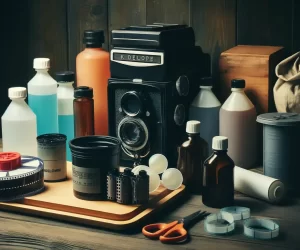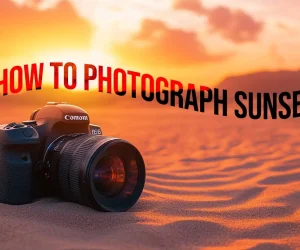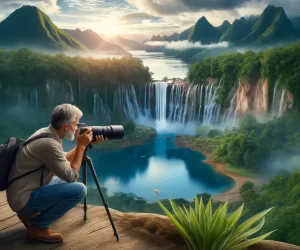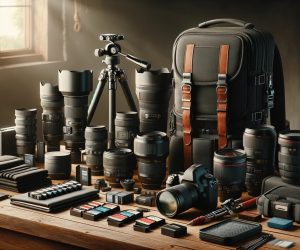
Introduction to Important Photographic Accessories
Ever heard of photographic equipment for stunning imaging? For those aiming to capture outstanding photos, incorporating important photographic accessories is key to elevating your shots. These tools not only enhance the quality of your photographs but also streamline your image taking process.
But which important photographic accessories are truly indispensable for achieving remarkable results? In this comprehensive guide, we’ll outline a curated selection of important photographic accessories across three distinct categories: external equipment, cleaning essentials, and protective gear. Whether you’re a seasoned professional or a budding enthusiast, investing in the right photographic equipment can significantly enhance your journey.
Table of Contents
Why Invest in Quality Photographic Gear?
Investing in the important photographic accessories can significantly enhance your experience. Whether you are a beginner or a seasoned professional, selecting the best accessories for your camera can elevate the quality of your shots. Understanding what to purchase, from a sturdy strap to a reliable lens, is crucial in building your filming kit.
Choosing the Best Camera Accessories
When it comes to choosing the best photographic equipment, consider factors like durability, compatibility, and functionality. Key items include a high-quality camera bag for protection, a versatile tripod for stability, and a selection of different types of lenses for creative flexibility. Brands like Canon offer a range of accessories that cater to various photography styles and needs. To know more about keeping your photographic equipment clean here: How to Clean Camera Lens.
The Importance of a Good Camera Bag
A good camera bag is one of the important photographic accessories that not only protects your equipment but also organizes it for easy access. Look for bags with ample storage, comfortable straps, and weather-resistant features. Peak Design is known for its ergonomically designed bags that provide both security and convenience for photographers on the go.
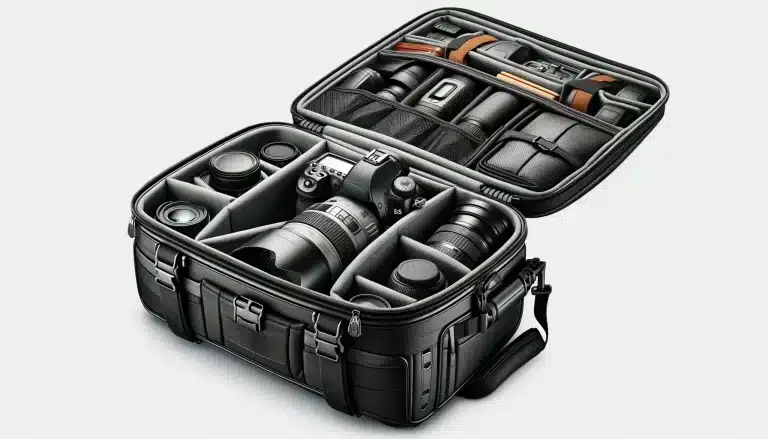
Selecting the Right Tripod
A tripod stands as a qualifying piece of equipment for many photographers, especially those focused on landscape or long-exposure photos. The finest tripods provide a blend of firm stability and adaptability. Key factors to consider include the maximum load capacity and the height range offered. A robust tripod can greatly enhance the clarity and overall quality of your images.
When browsing online, particularly on sites like Amazon, it’s crucial to carefully examine the contract terms, such as the refund policies, and stay informed about the current availability and pricing of products, as these might fluctuate or shift over time. Adopting this method ensures that you not only secure the most favorable deals but also acquire important photographic accessories that comprehensively satisfy your needs. To learn more about choosing the right camera, you can read our article.
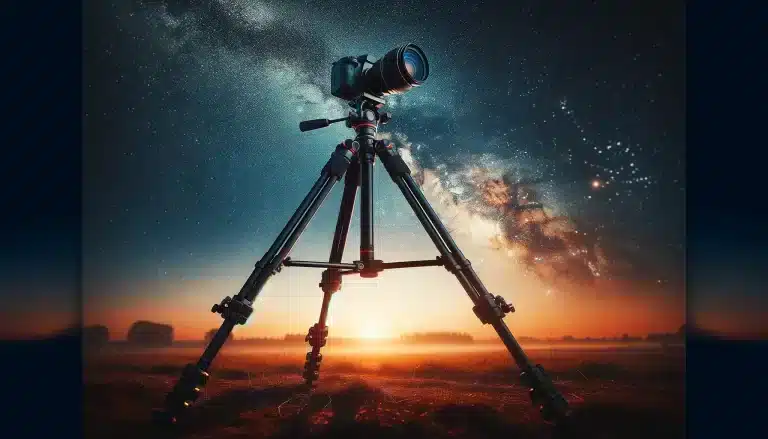
The Role of Cleaning Tools in Camera Care
Keeping your camera clean is as important as selecting the right equipment. Whether it’s a Canon DSLR or a compact Panasonic, every camera demands regular maintenance. Using tools like the Altura Photo Camera Cleaning Kit can ensure your equipment remains in top condition.
- Step 1: Use a blower to gently remove dust from the lens and body.
- Step 2: Apply a lens cleaner for smudges and fingerprints.
- Step 3: Utilize a microfiber cloth for final touches.
Specialized Cleaning Kits: Altura Photo and Beyond
- Altura Photo Cleaning Kit: Known for its versatility and effectiveness in cleaning lenses and sensors.
- DIY Options: For budget-conscious photographers, DIY cleaning tools can also be effective, though care must be taken to avoid damage.
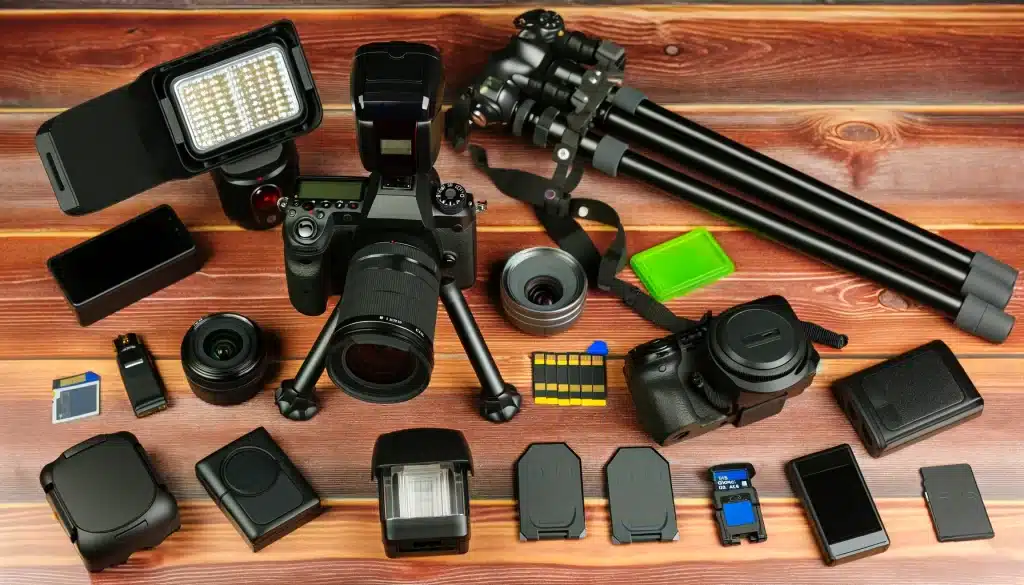
Protecting Your Equipment: Essential Safeguards
Choosing the Right Camera Bag: Safety and Style
A good camera bag is not just about carrying your equipment; it’s about protecting it. Brands like Peak Design and Manfrotto offer bags that combine security with style. The Peak Design Everyday Messenger bag, for instance, provides both functionality and aesthetic appeal.
- Peak Design Everyday Messenger: Ideal for those who want quick access to their gear while ensuring safety.
- Manfrotto Befree Bags: Perfect for travelers looking for a lightweight yet sturdy option to carry their tripods and cameras.
Essential Protection Accessories: From Rain Covers to Silicon Cases
To protect your camera from the elements, consider investing in accessories like rain covers and silicon protectors. These photographic equipment are crucial for extending the life of your camera, whether it’s a Nikon DSLR or a Sony mirrorless.
- Rain Covers: Essential for shooting in wet conditions, protecting your camera from water damage.
- Silicon Protectors: Provide an extra layer of protection against scratches and bumps.
Comparison of Camera Protection Accessories
Here’s a quick comparison of some popular protection accessories:
| Accessory Type | Brand/Model | Features |
|---|---|---|
| Camera Bag | Peak Design Everyday Messenger | Stylish design, quick access |
| Tripod | Manfrotto Befree | Lightweight, durable for travel |
| Rain Cover | Altura Photo Professional | Waterproof, easy to use |
| Silicon Protector | Generic Brands | Affordable, snug fit |
| Remote Shutter Release | Various Brands | Prevents shake, enhances control |
The Significance of Camera Accessories in Photo shooting
The single most important component of a camera is the twelve inches behind it.
Ansel Adams, a well-known American photographer
Elevating Your Picturing Game with the Right Photographic Accessories
Camera photographic equipment play a pivotal role in the world of imaging, serving not just as add-ons but as essential tools that can significantly elevate the quality of your work. From amateur enthusiasts to professional photographers, the right accessories are crucial in achieving desired photographic outcomes.
Lens Filters: Enhancing Image Quality
Lens filters are among the most influential accessories. They can dramatically alter and improve the quality of the images you capture. For instance, polarizing filters reduce glare and enhance colors, making them ideal for landscape photography. ND filters, on the other hand, allow for longer exposure times without overexposure, perfect for capturing motion in bright conditions.
Memory Cards: Ensuring Ample Storage and Speed
Adequate storage is critical in photography, and memory cards play a vital role. High-capacity, fast memory cards ensure that photographers can capture high-resolution images and videos without worrying about running out of space or experiencing lag during shoots.
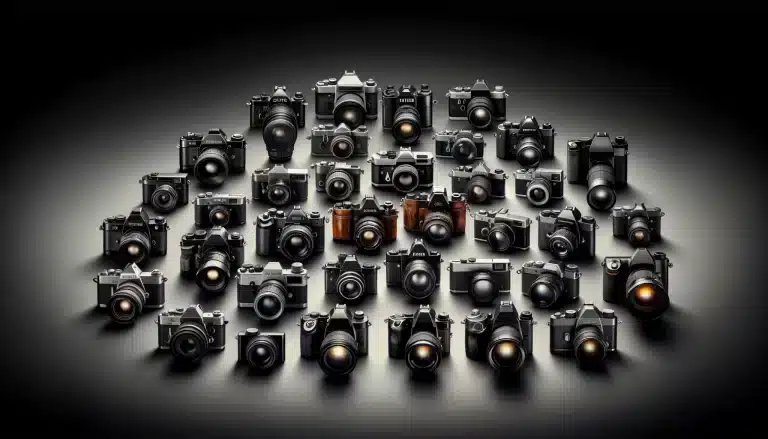
Tripods: Achieving Stability and Precision
Tripods are invaluable for photographers looking to achieve stability, especially in low light conditions or when capturing long exposures. A solid tripod can prevent camera shake, resulting in sharper images. They are particularly beneficial in genres like astrophotography, where precision and stability are paramount.
Speedlights and External Flash Units: Mastering Light
Lighting is a critical aspect of photography, and speedlights or external flash units can be game-changers. They provide additional light, enabling photographers to manage and manipulate the lighting conditions to their advantage. This is crucial in portrait picturing, where controlling light can dramatically impact the mood and quality of the image.
The Impact of Battery Grips: Extended Shooting Time
Battery grips are an underrated accessory that can significantly impact your photoing. They allow for extended shooting times by housing additional batteries. This is particularly useful for event or wildlife photographers who spend long hours shooting and cannot afford to change batteries frequently.
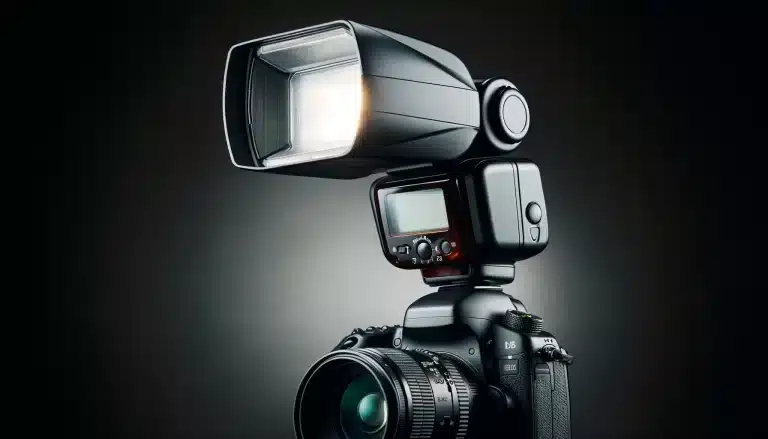
Remote Shutter Releases: Capturing Moments with Precision
Remote shutter releases allow photographers to capture images without physically touching the camera, eliminating the risk of camera shake. This photographic equipment is essential for capturing wildlife, astrophotography, and long-exposure photographs where even the slightest movement can ruin the shot.
Camera Bags and Cases: Protecting Your Investment
Investing in a high-quality camera bag or case is essential for protecting your equipment. These photographic equipment safeguard your camera and lenses from environmental factors like dust, moisture, and impacts. Moreover, they make transporting your equipment more manageable and secure, which is especially important for photographers who are often on the move.
The Impact of Battery Grips: Extended Shooting Time
Battery grips are an underrated accessory that can significantly impact your photoing. They allow for extended shooting times by housing additional batteries. This is particularly useful for event or wildlife photographers who spend long hours shooting and cannot afford to change batteries frequently.
You can get all the accessories mentioned here from Amazon.
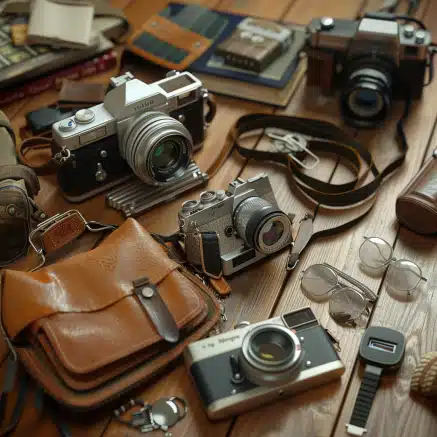
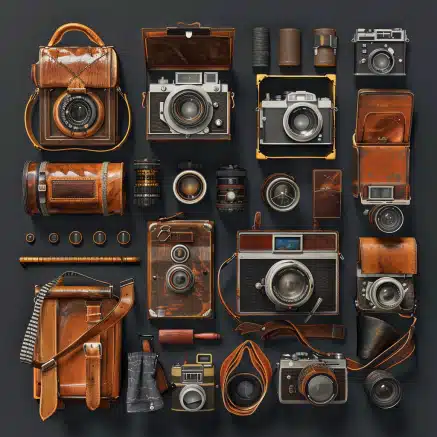
Choosing the Right Device: Best Cameras for Quality Photography
The best camera is the one that's with you.
Chase Jarvis, a renowned contemporary photographer
Essential Considerations for Selecting a Camera
When selecting a camera for quality photography, there are several factors to consider, including sensor size, image stabilization, autofocus capabilities, and of course, budget. Different cameras cater to varied photography needs, so understanding your specific requirements is key.
| Camera Model | Type | Key Features | Ideal For |
|---|---|---|---|
| Canon EOS R5 | Mirrorless | High resolution, Face/Eye detection, Excellent handling | Portrait Photography |
| Fujifilm X-T5 | Mirrorless | High-resolution APS-C sensor, Portable design, 4k video capabilities | Street/Travel |
| Nikon D7500 | DSLR | Good autofocus, Large buffer, Excellent image quality | General |
| Canon EOS R6 II | Mirrorless | 24-megapixel sensor, Dual memory card slots, Excellent autofocus | Versatile |
| RICOH GR III | Compact | APS-C sensor, Excellent image quality, Minimalist design | Travel/Street |
Latest Top Picks for Quality Photography
Photographic Accessories: Variety and Impact of Photographic Filters
Different Types of Filters and Their Impact
Polarizing Filters
Polarizing filters are like sunglasses for your camera. They work by filtering out certain light waves, reducing glare and reflections. Imagine photographing a serene lake. Without a polarizing filter, the surface may reflect the sky, hiding what’s beneath. With a polarizing filter, you can diminish this reflection. Similarly, when photographing a landscape with a blue sky, a polarizing filter can significantly enhance the blueness of the sky.
Neutral Density (ND) Filters
Filters act like a dimmer switch, reducing the amount of light entering the lens without affecting the color of the image. This is crucial when you want to use slow shutter speeds in bright conditions, for instance, to create a smooth, silky look in waterfalls or rivers. This will help you a lot in the future editing when you are using the selection tool in Photoshop.

Graduated ND Filters
Graduated ND filters are half clear and half dark, with a smooth transition in between. When photographing a sunset, the sky can be much brighter than the land. A graduated ND filter allows you to darken the sky to match the foreground, ensuring both parts of the image are well-exposed. This avoids the common problem of having a beautifully exposed sky but a too-dark foreground, or vice versa.
UV Filters
UV filters were originally designed to block ultraviolet light, which can cause haziness or a blue tint in photos, especially at high altitudes or in marine environments. Nowadays, they are often used to protect the lens from scratches, dust, and moisture.
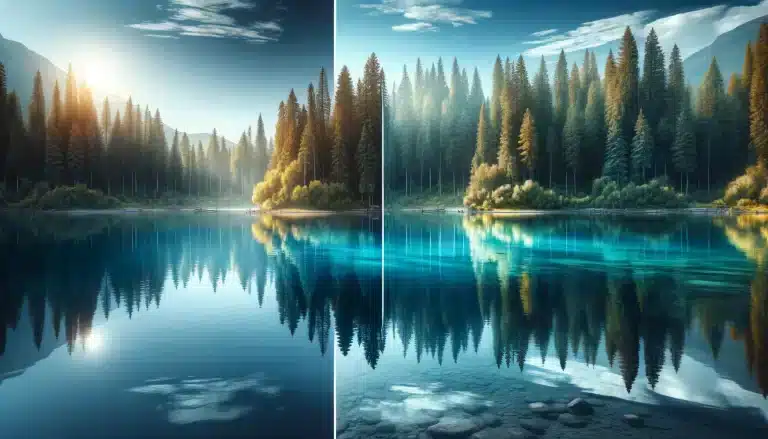
Filters in the Era of Advanced Photo Editing
Comparing Physical Filters with Photo Editing Software
While many effects can be replicated in photo editing software, certain filter effects are challenging to mimic perfectly. For example, the effect of a polarizing filter, which reduces glare and reflections, is almost impossible to replicate in software. Similarly, the specific quality of light reduction provided by ND filters, especially for long exposures, is hard to achieve digitally without compromising image quality.
Integrating Filters with Digital Workflows
Filters can be seen as a first step in the creative process of digital photography. They provide a base that can be further enhanced and refined in post-processing. For instance, starting with Lightroom accessories for improved workflow and a well-exposed image using a graduated ND filter means less work in balancing shadows and highlights later.
Also read Essential Tools in Photoshop for perfect photo editing and Glossory of photography.
The Best Phone Cameras: Top Picks for Photo'ing Enthusiasts
| Brand | Model | Key Features | Best For |
|---|---|---|---|
| Apple | iPhone 15 Pro Max | Advanced triple-camera system, sensor-shift OIS, 4K video, dual pixel PDAF, 5x optical zoom | Versatile Photography |
| Samsung | Galaxy S24 Ultra | 200 MP, f/1.7, 0.6µm, multi-directional PDAF, Laser AF, OI5x optical zoom | High-Resolution Shots |
| Pixel 7 Pro | Excellent low-light capabilities, Super Res Zoom, Cinematic Pan | Low-Light Photography | |
| Huawei | P50 Pro | Leica optics, High dynamic range, AI photography features | Professional Quality |
| Sony | Xperia 1 IV | Real-time Eye AF, 4K HDR video, 120Hz 4K display | Video & Gaming |
| OnePlus | 10 Pro | Hasselblad partnership, High color accuracy, Fast charging | Everyday Photography |
Top Smartphone Cameras for Photography
Understanding the Features of Top Phone Cameras
Resolution and Sensor Size
- In smartphone cameras, higher resolution typically means more pixels, which can capture finer details in photos. However, the size of the sensor is equally crucial. Larger sensors allow more light to be captured, resulting in better image quality, especially in low-light conditions. This combination of high resolution and larger sensor size contributes to sharper, more detailed images with a wider dynamic range.
Software Features
- Modern smartphones heavily leverage software for image processing. AI enhancements can optimize settings for different scenes, while computational photography techniques like HDR and night mode can produce images that surpass traditional camera capabilities in some respects.
Lens Quality
- The quality of the lens in a phone camera significantly affects the sharpness, clarity, and color accuracy of the photos. Premium partnerships, like those with Leica or Zeiss, indicate a commitment to high-quality lens design, incorporating advanced optics to reduce distortions and aberrations.
Choosing the Right Phone Camera
- Consider Your Photography Style: Whether it's landscapes, portraits, or low-light photography, choose a phone that excels in your preferred style.
- Budget: High-end models like Iphone 15 Pro Max and Samsung S24 Ultra offer more features but come at a higher price. Mid-range options such as Xiomi, Google Pixel A-Series, and One Plus can be great value-for-money.
Smartphone cameras have become powerful tools for picturing, offering convenience without compromising on quality. The models listed above represent some of the best options available, catering to a range of styles and budgets.
For adventure enthusiast photographers we have compiled a list of wildlife photography equipment. You can also get some good tips on portrait editing – Photoshop actions
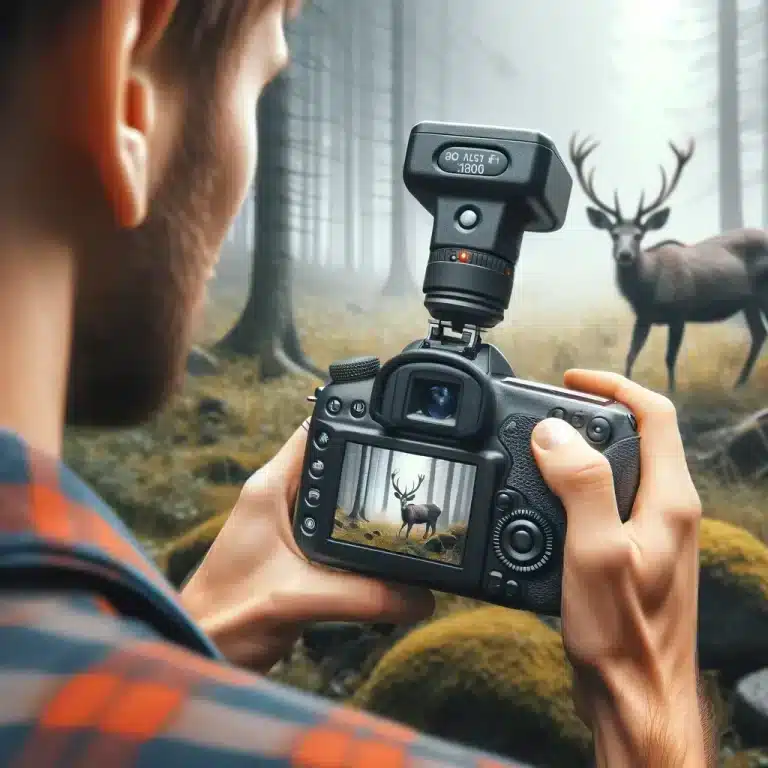
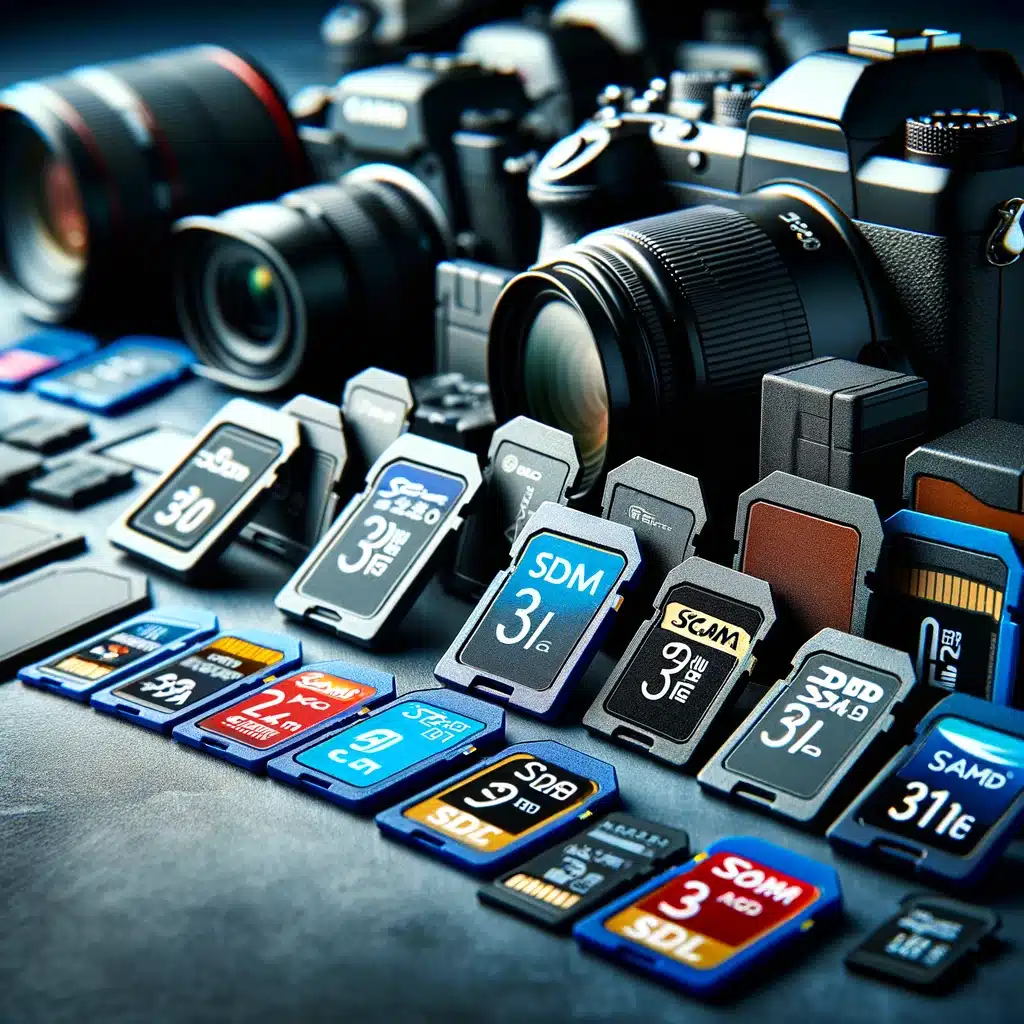
DSLR in Focus: Do Professional Photographers Prefer DSLR Cameras?
The Enduring Appeal of DSLR Cameras
- Optical Viewfinder Advantage: DSLRs, like those from Canon and Nikon, offer an optical viewfinder that provides a clear, lag-free view of the subject, which is crucial for certain types of photography.
- Battery Life: DSLRs generally have longer battery life compared to mirrorless cameras, making them reliable for extended shoots.
- Lens Variety and Availability: With a vast range of lenses available, DSLRs offer versatility. Brands like Canon and Nikon have extensive lens libraries that cater to all kinds of photographic needs.
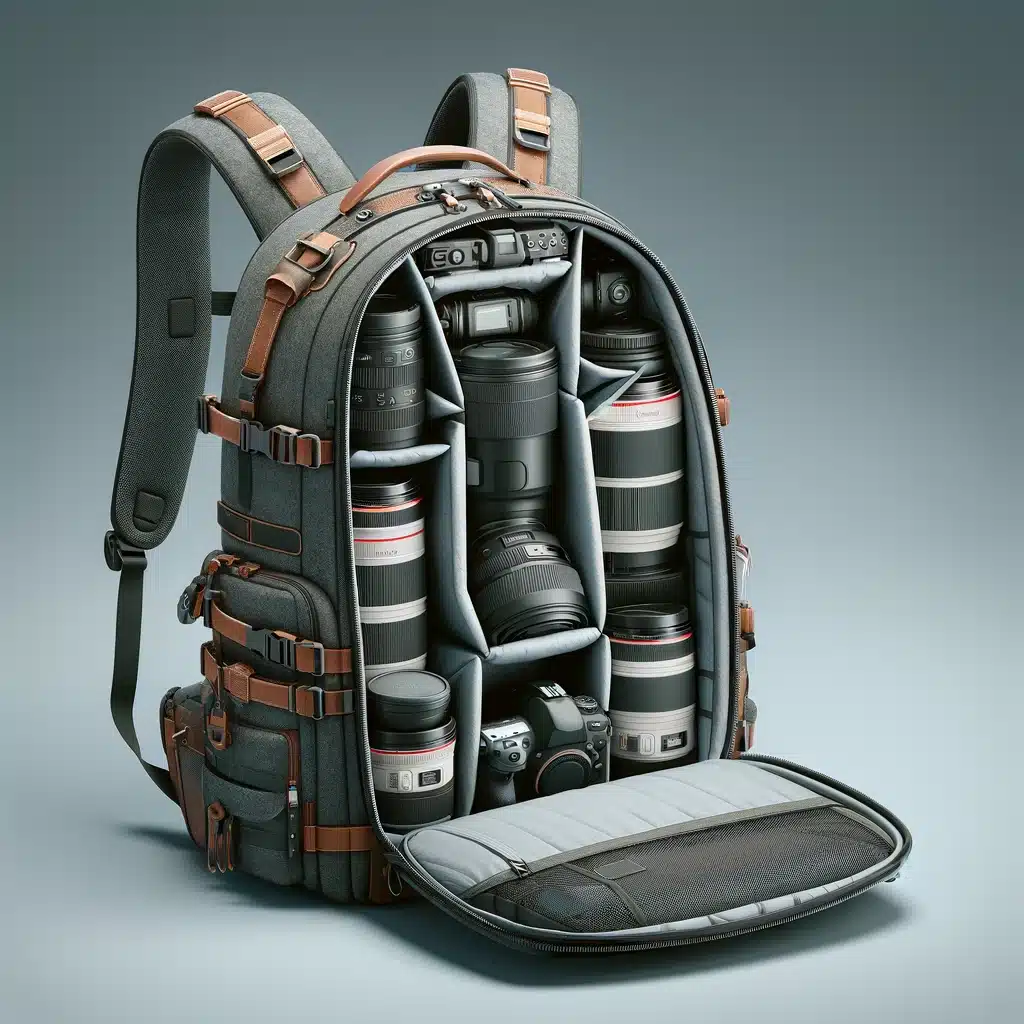
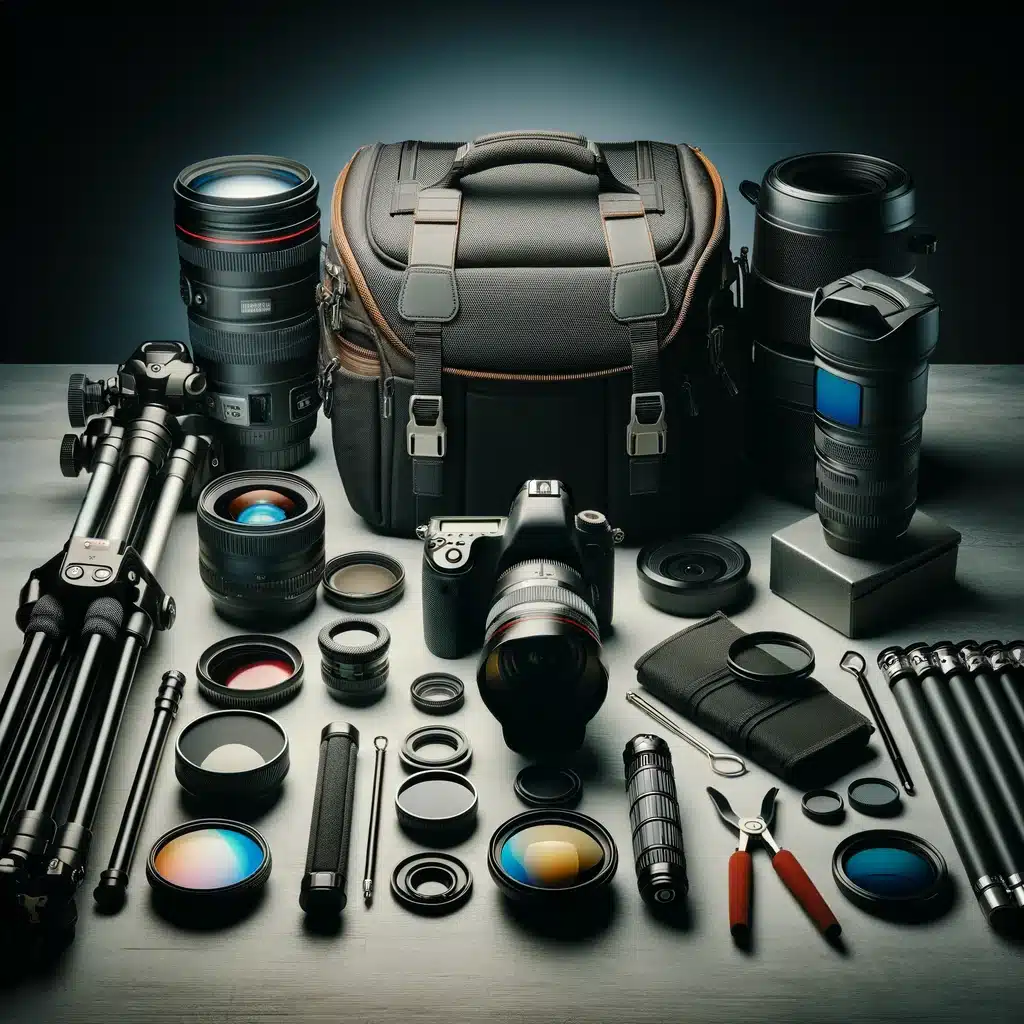
Comparing DSLRs with Mirrorless Cameras
- Size and Weight: DSLRs are bulkier than mirrorless cameras, which can be a factor for photographers who travel frequently.
- Autofocus Speed: Modern mirrorless cameras, such as those from Sony and Fujifilm, often offer faster autofocus systems compared to DSLRs.
- Video Capabilities: Mirrorless cameras typically have better video recording features, making them a popular choice for videographers.
Why Some Professionals Still Choose DSLRs
- Familiarity and Handling: Many professional photographers are accustomed to the design and ergonomics of DSLRs, preferring their handling and control layout.
- Optical System Reliability: The optical viewfinder in DSLRs is preferred by some for its reliability and natural view, especially in brightly lit environments.
- Investment in Lenses and Accessories: Professionals with a significant investment in DSLR lenses and accessories might prefer to continue using DSLR systems.
FAQs
What are Photographic Equipment?
What are the three important photographic accessories for a digital camera?
- The three essential photographic equipment for a digital camera, which you can purchase on platforms like Amazon with options for refunds and deals, include:
- A high-quality camera bag for protection and transport. Check the material quality and apply caution to ensure it meets your needs.
- A sturdy tripod for stable and sharp images. Before you buy, verify the max load capacity and grip features.
- Various lens filters for creative control and image protection; always confirm their compatibility with your camera.
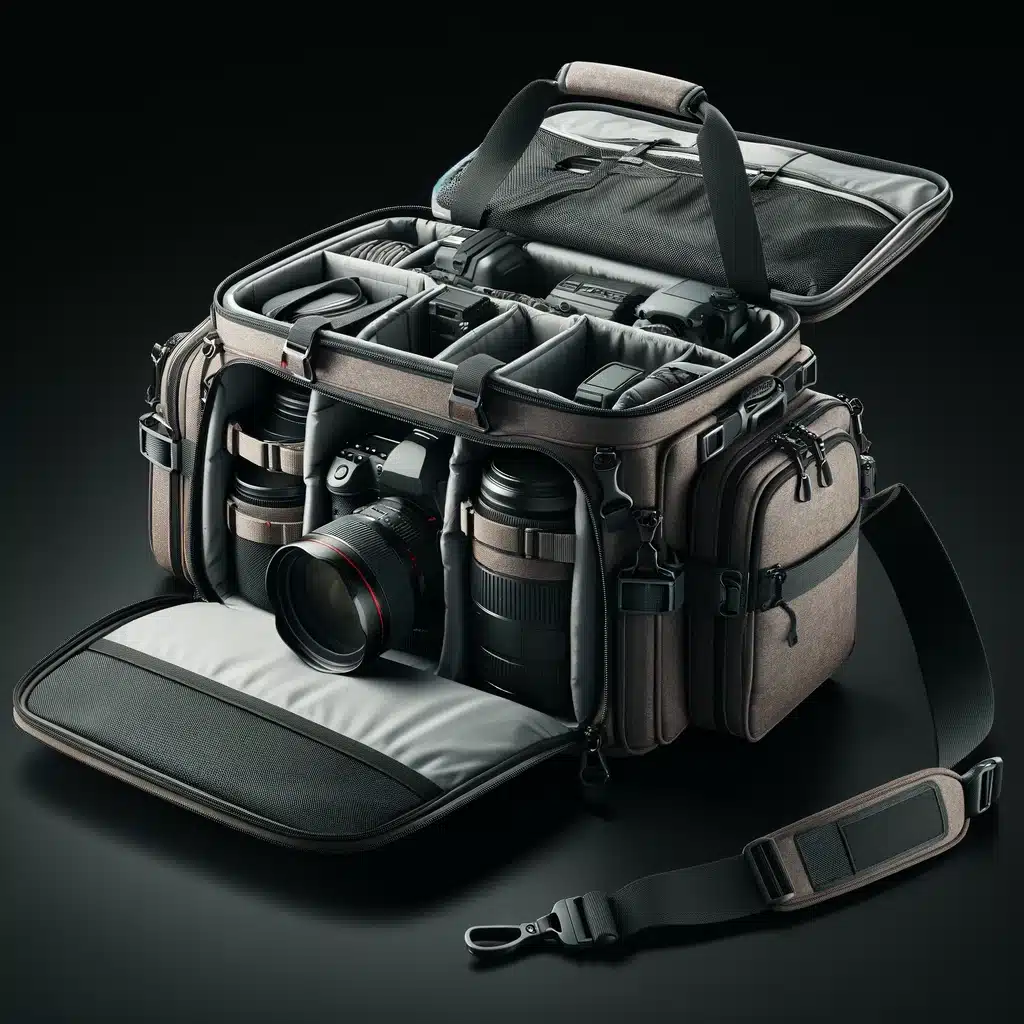
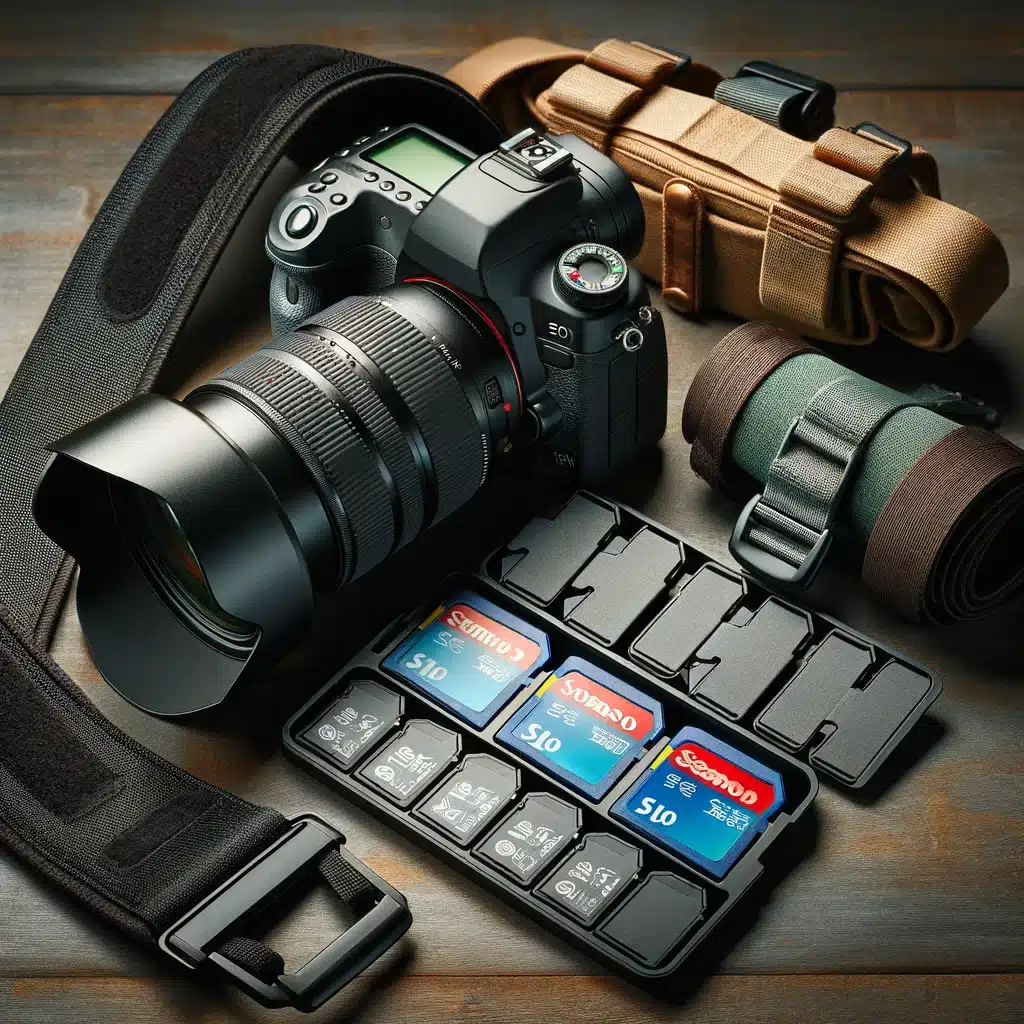
What does every photographer want?
- Reliable equipment delivering high-quality images, available for purchase on platforms like Amazon.
- Accessories enhancing camera functionality, such as straps with a secure grip and durable material.
- Gear that's durable and portable, like a versatile backpack, ideal for different shooting environments.
Why are camera straps important?
Camera straps are crucial for:
- Securely carrying your camera, where the strap's material and design are key.
- Reducing the risk of damage, especially during active use.
- Quick access to the camera for spontaneous shots; look for straps with adjustable length and comfortable grip.
How do lens hoods improve photography?
- Lens hoods enhance photos by:
- Reducing lens flare and glare from bright sources, crucial for maintaining image quality.
- Protecting the lens from impacts, where the hood's material offers varying degrees of protection.
- Enhancing image contrast and color saturation, making them a valuable addition to a photographer's kit.
Conclusion
In the exploration of the ever-evolving world of important photographic accessories, it has become clear how vital and game-changing these items are for photographers, regardless of their experience level. For me, the decision to invest in high-quality accessories marked a pivotal moment in my journey with my camera. The acquisition of a durable strap and a multi-functional backpack from Amazon notably transformed my approach to outdoor photography. The ease and comfort they provided, coupled with the enhanced protection for my camera and other equipment, were unmatched.
As you refine your skills, consider exploring our in-depth Photoshop Course and Lightroom Course. These courses are designed to complement your practical photography skills, ensuring that your work, supported by the important photographic accessories, reaches its full potential. Don’t miss out on the opportunity to elevate your photography; check out these courses, and remember, your purchase may qualify for special deals or a refund policy, giving you peace of mind as you invest in your professional growth.
Have a nice photoshoot!



